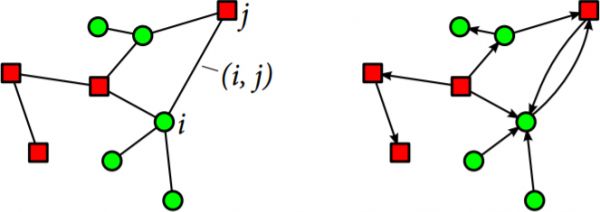zschaler2012adaptivenetwork
Adaptive-network models of collective dynamics
G. Zschaler
Eur. Phys. J. Spec. Top. 211, 1-101, 2012
Complex systems can often be modelled as networks, in which their basic units are represented by abstract nodes and the interactions among them by abstract links. This network of interactions is the key to understanding emergent collective phenomena in such systems. In most cases, it is an adaptive network, which is defined by a feedback loop between the local dynamics of the individual units and the dynamical changes of the network structure itself. This feedback loop gives rise to many novel phenomena. Adaptive networks are a promising concept for the investigation of collective phenomena in different systems. However, they also present a challenge to existing modelling approaches and analytical descriptions due to the tight coupling between local and topological degrees of freedom. In this work, which is essentially my PhD thesis, I present a simple rule-based framework for the investigation of adaptive networks, using which a wide range of collective phenomena can be modelled and analysed from a common perspective. In this framework, a microscopic model is defined by the local interaction rules of small network motifs, which can be implemented in stochastic simulations straightforwardly. Moreover, an approximate emergent-level description in terms of macroscopic variables can be derived from the microscopic rules, which we use to analyse the system’s collective and long-term behaviour by applying tools from dynamical systems theory. We discuss three adaptive-network models for different collective phenomena within our common framework. First, we propose a novel approach to collective motion in insect swarms, in which we consider the insects’ adaptive interaction network instead of explicitly tracking their positions and velocities. We capture the experimentally observed onset of collective motion qualitatively in terms of a bifurcation in this non-spatial model. We find that three-body interactions are an essential ingredient for collective motion to emerge. Moreover, we show what minimal microscopic interaction rules determine whether the transition to collective motion is continuous or discontinuous. Second, we consider a model of opinion formation in groups of individuals, where we focus on the effect of directed links in adaptive networks. Extending the adaptive voter model to directed networks, we find a novel fragmentation mechanism, by which the network breaks into distinct components of opposing agents. This fragmentation is mediated by the formation of self-stabilizing structures in the network, which do not occur in the undirected case. We find that they are related to degree correlations stemming from the interplay of link directionality and adaptive topological change. Third, we discuss a model for the evolution of cooperation among self-interested agents, in which the adaptive nature of their interaction network gives rise to a novel dynamical mechanism promoting cooperation. We show that even full cooperation can be achieved asymptotically if the networks’ adaptive response to the agents’ dynamics is sufficiently fast.

Figure 1: Networks with two different node types/states. Two nodes i and j are marked, as well as the connecting link (i, j). Left: undirected network. Right: directed network with a pair of reciprocal links.
